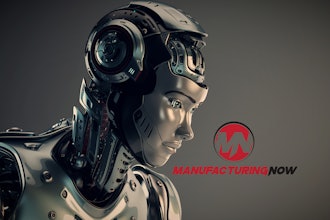
 Greg Coleman
Greg ColemanIn today’s manufacturing businesses, the user experience is increasingly dominating the conversation around technology. Supporting these users, who are often connecting remote while traveling or working extended hours at home, is challenging the traditional model. With technology at home rivaling, or surpassing, the technology used in the workplace, our employee expectations around devices and support are changing. Devices are becoming consumable, often user owned, with data and applications living in the cloud at our fingertips.
Corporate devices must become more like our iPhone or Android mobile devices—agnostic to make and model, driven by profile, near immediate access to applications, and data, all while under the umbrella of corporate governance. Picture your last new mobile device… did this device require IT support to configure, to deploy applications, to transfer local data, et al.? The consumer model has shaped the mold of corporate IT and the requisite support model that it necessitates in this new age.
First, let’s examine key elements in the manufacturing workplace that are driving a need for modernization around IT support services. End users are demanding an ‘at home’ experience at work— this means using their home devices for corporate work, often accessing files and applications from a variety of mobile devices and/or tablets that are personally owned, and working from more locations than ever. If supported with a traditional IT helpdesk approach, solving incidents and fulfilling requests by heroics, long hours, and high touch support models will keep the manufacturing business’ IT team utilized, user facing, and costly. Even worse, unproductive chasing an open ticket queue that never seems to go away.
It is never a bad time to make the right decision, so let’s review key elements that require immediate conversations within your leadership team to ensure progress is being made against your future technology model.
End User & IT Consumption
The sanctity corporate owned PCs, operating on corporate network, with no administrative rights is quickly diminishing. Productivity and the end user experience reigns supreme. With user owned devices becoming more common in the workplace, how do we control applications, licenses, data, and security risks? The short answer is that we cannot live ‘locally’ anymore. The C drive is no longer home, our profile is home, regardless of device. If each device operates independently and locally, the need for support will continue to be vast and continuous. We must begin to move to a model where the end user is managed centrally and remotely.
In a support context, how can IT create a device friendly approach to such a desired outcome—virtual applications, web based applications, applications that are packaged, perhaps even governed by group policy. There are concerns around OS compatibility that need to be considered; however, this is a policy item that will need to be established with users. As devices become more of a consumable, and licensing and compute power become the engine behind productivity, a more scalable and flexible application access model is required. For end user data, similar to applications, questions must be raised as to what systems this data should reside in and what cloud-based repositories should store personal data. Corporate policies must establish acceptable use, data ownership, corporate access to devices, and the like.
Notice a theme? The device is simply a means to connect your ‘profile’, not a physical hard-drive that your professional productivity depends on.
IT Support Must Evolve
With the device becoming secondary to the central administration of platforms and technologies, the end user support model will change—application deployments will decrease or become more easily resolved, transition to a new PC becomes more simple, as devices become more consumable we will spend less time and money repairing legacy devices, and we begin to see a shift away from the traditional front line of IT support.
Infrastructure and the digital experience become the driving force behind end user productivity. With more applications and data in the cloud, being monitored and managed remotely, we can resolve end user issues and monitor system performance. Resolving incidents before end users experience disruptions. What remains of front-line support will be complex ‘how to’ questions now that application issues are rarer and more quickly resolved, PC contents becomes more minimal, and access related requests becomes more centrally managed. At the device level, technologies existing that place a client on the desktop to monitor asset health, proactive resolve incidents as they begin to form, and to perform self-healing actions.
The digital transformation of IT support is happening now in the manufacturing workplace. Users are driving the change through personally owned devices and the need for a mobile, at home work experience. It is our challenge to provide employees the platforms required for application and data access, in a centrally governed fashion, to align with the business. These alignments will drive down labor costs through reduced need for manual support intervention and free up funds for the technologies required to move forward as an organization.
Greg Coleman is a Solution Architect at Getronics.






















